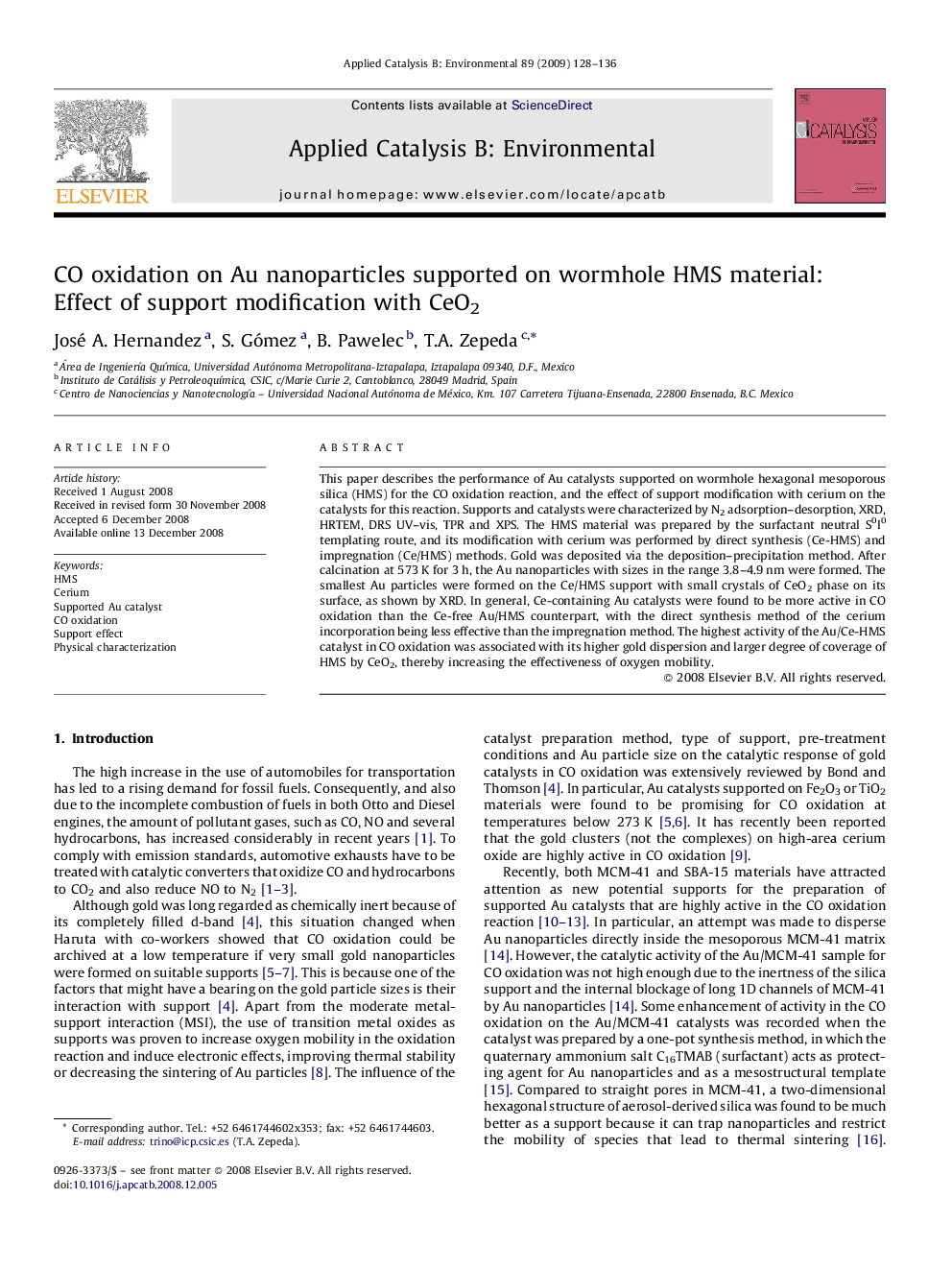| Article ID | Journal | Published Year | Pages | File Type |
|---|---|---|---|---|
| 47843 | Applied Catalysis B: Environmental | 2009 | 9 Pages |
This paper describes the performance of Au catalysts supported on wormhole hexagonal mesoporous silica (HMS) for the CO oxidation reaction, and the effect of support modification with cerium on the catalysts for this reaction. Supports and catalysts were characterized by N2 adsorption–desorption, XRD, HRTEM, DRS UV–vis, TPR and XPS. The HMS material was prepared by the surfactant neutral S0I0 templating route, and its modification with cerium was performed by direct synthesis (Ce-HMS) and impregnation (Ce/HMS) methods. Gold was deposited via the deposition–precipitation method. After calcination at 573 K for 3 h, the Au nanoparticles with sizes in the range 3.8–4.9 nm were formed. The smallest Au particles were formed on the Ce/HMS support with small crystals of CeO2 phase on its surface, as shown by XRD. In general, Ce-containing Au catalysts were found to be more active in CO oxidation than the Ce-free Au/HMS counterpart, with the direct synthesis method of the cerium incorporation being less effective than the impregnation method. The highest activity of the Au/Ce-HMS catalyst in CO oxidation was associated with its higher gold dispersion and larger degree of coverage of HMS by CeO2, thereby increasing the effectiveness of oxygen mobility.
